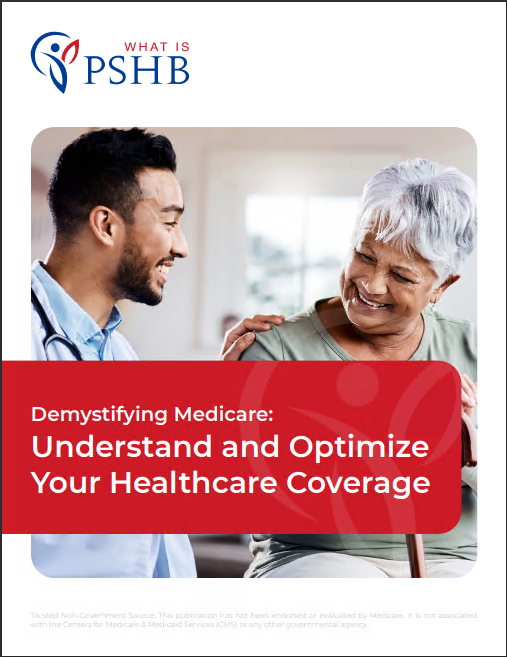Key Takeaways
-
Explore Your Options: With Open Season, Postal employees and retirees can evaluate their healthcare choices to ensure their plan meets their needs for the coming year.
-
Medicare Matters: Medicare-eligible annuitants and family members should review any new requirements to maintain their PSHB coverage.
Navigating PSHB Open Season Like a Pro
Each year, Open Season brings you the opportunity to review, choose, or make changes to your health benefits under the Postal Service Health Benefits (PSHB) program. Open Season for PSHB runs from November 11 to December 9, 2024. This timeframe is your once-a-year opportunity to explore your health plan options and ensure your postal family is set up with the right coverage for the coming year.
If you’re newly eligible or simply looking to refresh your knowledge, let’s break down what you should know—and what to look for—when selecting a PSHB plan.
1. Start with the Basics: Why Open Season Matters
During Open Season, you have the flexibility to:
- Enroll in a health plan if you aren’t currently covered under PSHB.
- Switch your health plan to better match your needs or preferences.
- Add or drop coverage for dependents in your family.
Your choice this season impacts your coverage and premiums for the full year of 2025. Missing this period could mean sticking with a plan that doesn’t meet your family’s needs or having to wait another year to make adjustments.
2. Understand the Automatic Enrollment Transition
If you’re a current Federal Employees Health Benefits (FEHB) enrollee, your enrollment will be automatically transitioned to a similar PSHB plan for 2025. However, “similar” doesn’t always mean identical, so it’s important to review your options carefully. Automatic enrollment might be convenient, but you may find that other options are a better fit for your specific healthcare needs.
3. Review Your Family’s Health Needs First
To find the best health plan for your family, start with a review of your family’s recent healthcare needs and expected costs:
- How often do you visit the doctor? If you have regular appointments, check that your preferred providers are covered within your network.
- What prescriptions do you rely on? Prescription coverage varies, so ensure that the plan includes your medications at a manageable cost.
- Are any specialists or specific treatments required? Some plans have better access to specialized care, so choose a plan with network flexibility if needed.
- Family health changes: Consider any major upcoming health needs for family members, such as planned surgeries, pregnancies, or anticipated therapy or wellness programs.
These factors help shape the type of plan that will provide the best balance of cost and care for your situation.
4. Know Your Plan Types: HMO, PPO, and More
PSHB offers a few plan types to choose from, and understanding them is key to picking the best option:
-
Health Maintenance Organization (HMO): HMOs typically have lower premiums but require you to stay within a set network of doctors and healthcare providers. You’ll need referrals for specialist care, so this is often a better fit if you have regular primary care needs.
-
Preferred Provider Organization (PPO): PPOs offer more flexibility by allowing you to see out-of-network providers, though you’ll pay higher costs for doing so. PPOs tend to have higher premiums but can be advantageous if you need specialized or out-of-network care.
-
High-Deductible Health Plans (HDHP): HDHPs come with lower premiums but higher deductibles. These plans are best if you don’t expect to use much healthcare in the upcoming year. HDHPs often include Health Savings Accounts (HSAs), which allow you to save pre-tax money for medical expenses.
Knowing your preferred plan type helps narrow down your options, so consider what’s most important for you and your family.
5. Focus on Key Benefits for Medicare-Eligible Members
For annuitants and their family members who are eligible for Medicare, there are important factors to keep in mind. As of 2025, many Medicare-eligible Postal retirees and family members will need to enroll in Medicare Part B to maintain their PSHB plan. There are some exceptions, particularly for those who retired on or before January 1, 2025, and aren’t currently enrolled in Part B.
-
Medicare Integration: If you’re Medicare-eligible, check how each PSHB plan works alongside your Medicare coverage. Medicare will often act as your primary insurance, with your PSHB plan filling in gaps to reduce out-of-pocket expenses.
-
Costs and Premiums: Keep in mind that enrolling in Medicare Part B comes with its own monthly premium, which is separate from your PSHB premium. Factor this cost into your budget to ensure you’re getting the most out of your coverage without stretching your finances.
6. Compare Premiums, Deductibles, and Out-of-Pocket Limits
Every health plan has its own set of premiums, deductibles, and out-of-pocket maximums. Comparing these costs is essential to find the right plan for your budget.
-
Premiums: This is the amount you pay monthly or bi-weekly to maintain your coverage. Lower premiums often come with higher out-of-pocket costs, so choose a balance that matches your anticipated healthcare needs.
-
Deductibles: The deductible is the amount you pay out-of-pocket before your insurance kicks in. If you anticipate regular doctor visits or specialist appointments, look for a plan with a manageable deductible.
-
Out-of-Pocket Maximums: These limits protect you by capping the amount you’ll pay in a year. Once you reach this limit, the plan covers 100% of your medical expenses. Choosing a plan with a low out-of-pocket maximum is wise if you expect higher medical expenses.
7. Evaluate Prescription Drug Coverage
Prescription costs can vary widely across plans. Some PSHB plans offer better drug benefits or include more generics in their formulary, so take time to review how each plan handles prescription costs.
-
Check Formulary Lists: Each plan has a formulary, or list of covered drugs. Ensure your regular medications are included, and review the plan’s tiers and copays.
-
Consider a Prescription Deductible: Some plans offer a separate prescription deductible, which can affect what you pay out-of-pocket. Plans with higher drug coverage deductibles might be less ideal if you have multiple medications.
8. Weigh the Additional Perks and Benefits
Many PSHB plans offer extra benefits beyond standard medical coverage, so don’t overlook these “extras” that might enhance your healthcare experience. Some perks include:
-
Wellness Programs: Programs for health coaching, smoking cessation, weight management, and more. These can help you and your family maintain healthy habits throughout the year.
-
Telemedicine: Access to virtual healthcare options can be a lifesaver when you need medical advice on short notice.
-
Preventive Services: Some plans may cover more preventive services than others, which can be helpful for routine screenings and immunizations.
While these extra benefits shouldn’t be the sole reason for choosing a plan, they can add value to your selection and make healthcare more convenient.
9. Use the PSHB Comparison Tools for Informed Choices
OPM offers comparison tools during Open Season to help you weigh your PSHB options. Use these resources to:
-
Compare Plans Side-by-Side: See differences in premiums, deductibles, out-of-pocket costs, and more.
-
Estimate Costs: Enter details about your healthcare needs to receive estimated annual costs. This gives a clearer view of which plan might save you money over the year.
Checking these details ensures that you aren’t surprised by unexpected costs and can make a well-informed decision.
Ready to Select Your 2025 Health Plan?
With Open Season here, it’s time to dive into your options and find the right PSHB plan for you and your family. By reviewing your health needs, understanding how each plan works, and carefully comparing costs and benefits, you’re setting up for a year of better, more predictable healthcare.
Take full advantage of this Open Season period—review, compare, and ask questions if you need to. After all, health coverage is one of the best investments you can make in the well-being of your postal family.






